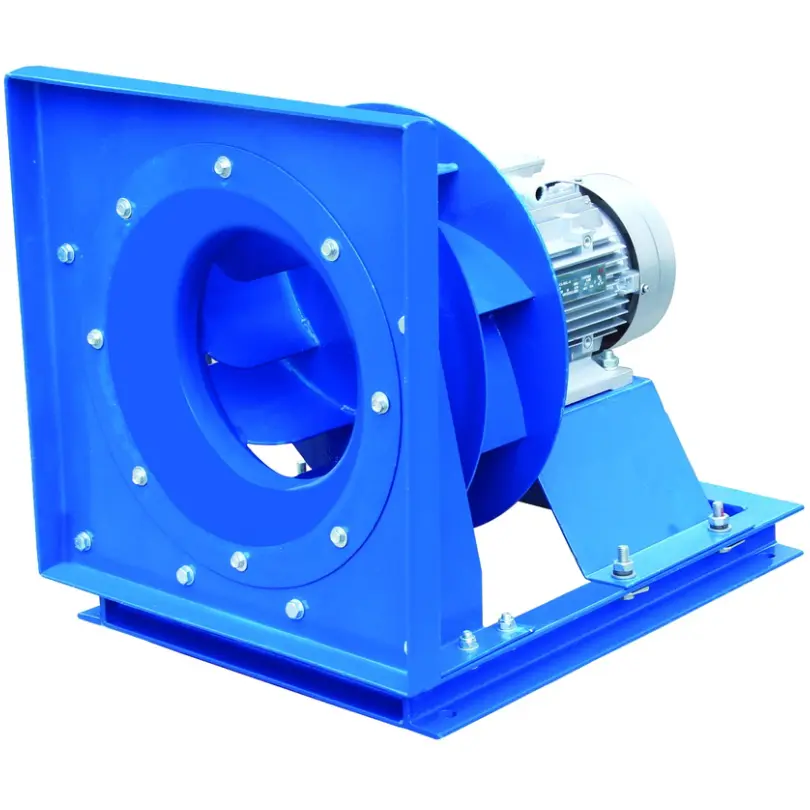1. Type A: cantilever type, without bearings, the fan impeller is directly mounted on the motor shaft, and the fan speed is the same as the motor speed. Suitable for small centrifugal fans with compact structure and small body.
2. Type B: Cantilever type, belt drive structure, the pulley is installed between the two bearing seats. Applicable to medium-sized or above centrifugal fans with variable speed.
3. Type C: Cantilever type, belt drive structure, the pulley is installed on the outside of the two support bearings. It is suitable for centrifugal fans of medium size and above with variable speed, and the pulley is more convenient to remove.
4. Type D: cantilever type, using a coupling to connect the main shaft of the fan and the motor. The coupling is installed on the outside of the two supporting bearing seats. The speed of the fan is the same as the speed of the motor. Applied to medium-sized or above centrifugal fans.
5. E type: Belt drive structure, two support bearing seats are installed on both sides of the casing, that is, the impeller is placed in the middle of the two support bearings, it is a two-support type, and the pulley is installed on one side of the fan. It is suitable for double-suction or large-scale single-suction centrifugal fans with variable speed. Its advantage is that the operation is relatively balanced.
6. Type F: A transmission structure that uses a coupling to connect the main shafts of the fan and the motor. The two support bearings are installed on both sides of the casing. It is a two-support type. The coupling is installed on the outside of a bearing seat. It is suitable for double-suction or large-scale single-suction centrifugal fans with the same speed as the motor speed. Its advantage is that it runs relatively smoothly.
Post time: Jan-23-2024

